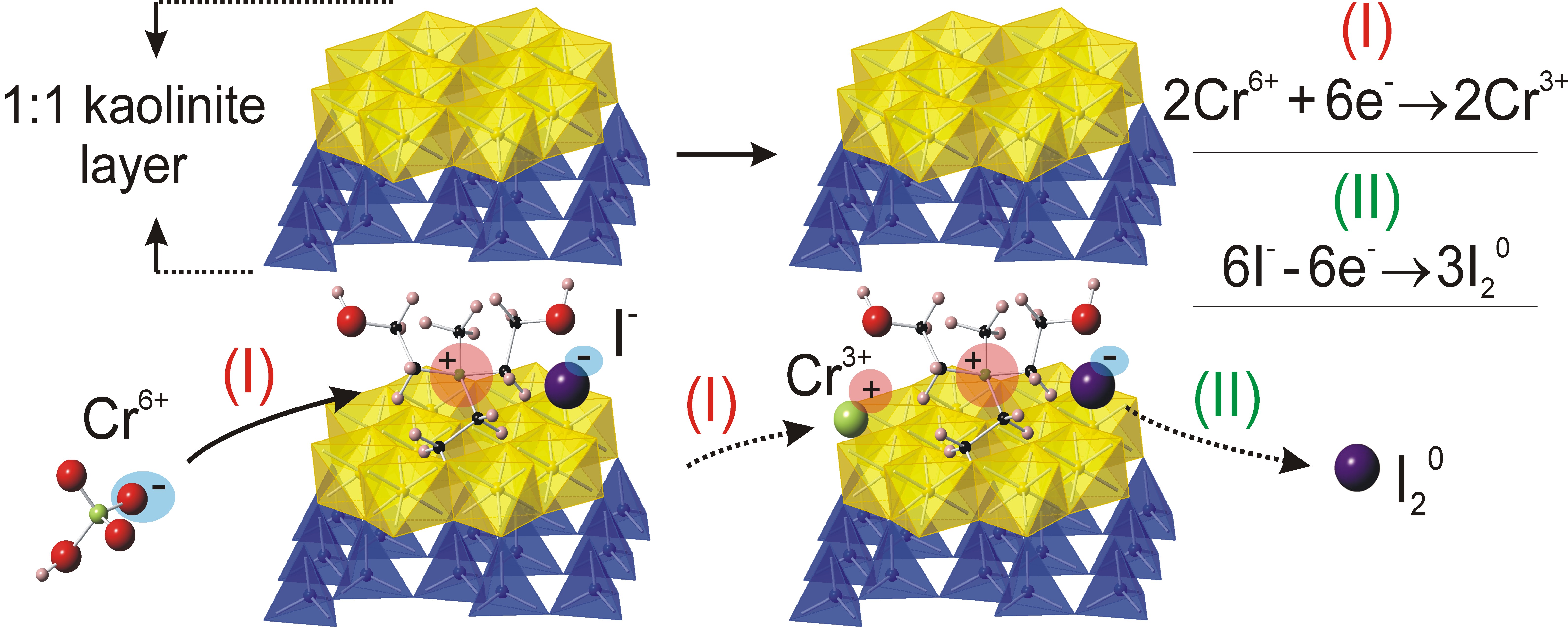Title: Sorption properties of hybrid mineral nanomaterials derived from
kaolin group minerals
Duration: 2011-2014
Principal Investigator: Jakub Matusik
Key Investigators: Tomasz Bajda, Małgorzata Zimowska
Funding agency: National Science Centre (Poland)
Project ID: Sonata 1

The conducted research showed a new way for the production of sorbents using kaolin minerals from Polish deposits. Sorbents are materials capable of removing selected harmful ions from waters. Both cationic (positively charged) as well as anionic (negatively charged) elemental forms can be hazardous for the environment and subsequently for living organisms. Heavy metals with toxic properties such as lead and cadmium can lead to serious health problems even at low concentrations. Zinc and copper are important nutrients required in small quantities, however their high concentrations are harmful and cause different diseases. Chromates and arsenates are highly mobile in the environment and their toxic and/or cancerogenic properties are known. The excessive amount of phosphates, sulphates and nitrates negatively affects the waters quality leading to: eutrophication of water reservoirs which is their overgrowing. Therefore, the chemical remediation of drinking waters, industrial sewage and soil solutions is of great environmental importance. In particular adsorption techniques are desirable as sorbents can be partially or completely regenerated and thus they can be reused.
For the research kaolin minerals were chosen from Polish Lower Silesia deposits:
Maria III, Rusko Jaroszów and Dunino. These minerals differ in structural features which affect their chemical activity and susceptibility for modifications with selected organic compounds. Kaolin minerals are build from silicon, aluminum, oxygen, and hydrogen atoms. These atoms form a structure known as layered structure. These minerals are mainly used in ceramic and paper industry. However their specific structure can be modified through chemical synthesis. The modification involves the introduction of appropriate organics into the layered structure. The inserted molecules are places were toxic ions are attached and thus are removed from the water solutions. Therefore, the efficiency of harmful ions removal is much higher for the modified minerals.
The research in particular enabled to establish the conditions which are appropriate to obtain sorbents of cationic and anionic toxic forms. With the help of chemical and mineralogical analytical methods the structure of new mineral hybrids was examined and also the methods allowed to confirm that planned modifications took place at an atomic level. A high remediation efficiency was confirmed by using model water solutions containing lead Pb(II), cadmium Cd(II), zinc Zn(II), copper Cu(II), nickel Ni(II), chromium Cr(III) and Cr(VI), arsenic As(V), phosphorus P(V), sulphur S(VI) and nitrogen N(V). Apart from gathering information on the sorption efficiency which included maximal portion of elements which could be removed, also the mechanism of ions removal were investigated.
Most important publications:
- Koteja, A. and Matusik, J. (2015) Di- and triethanolamine grafted kaolinites of different structural order as adsorbents of heavy metals. Journal of Colloid and Interface Science, 455, 83-92.
- Matusik, J., Matykowska, L. (2014) Behaviour of kaolinite intercalation compounds with selected ammonium salts in aqueous chromate and arsenate solutions. Journal of Molecular Structure, 1071, 52-59.
- Matusik, J. (2014) Arsenate, orthophosphate, sulfate, and nitrate equilibria and kinetics for halloysite and kaolinites with an induced positive charge. Chemical Engineering Journal, 246, 244-253.
- Matusik, J., Bajda, T. (2013) Immobilization and reduction of hexavalent chromium in the interlayer of positively charged kaolinites. Journal of Colloid and Interface Science, 398, 74-81.
- Matusik, J. (2013) Kinetyka sorpcji Cr(VI) na surowych i modyfikowanych minerałach kaolinitowych. W: Sorbenty mineralne : surowce, energetyka, ochrona środowiska, nowoczesne technologie. ISBN: 978-83-7464-629-1. s. 285-296.
- Matykowska, L., Matusik, J. (2013) Interkalaty kaolinitu z solami amoniowymi i ich zdolność do usuwania chromianów z roztworów wodnych. W: Sorbenty mineralne : surowce, energetyka, ochrona środowiska, nowoczesne technologie, s. 297-310.
- Wścisło, A., Matusik, J. (2013) Sorpcja kadmu na modyfikowanym haloizycie. W: Sorbenty mineralne: surowce, energetyka, ochrona środowiska, nowoczesne technologie, s. 559-572.
- Matusik, J., Wścisło, A. (2013) Equilibrium and kinetic study of heavy metals sorption on grafted halloysite. In: 50th Anniversary of The Clay Minerals Society: 1963-2013: annual meeting: October 6-10, 2013, Urbana-Champaign : program & abstracts. S. 165-166.
- Matusik, J., Bajda, T. (2013) Sorption of arsenate and phosphate on positively charged kaolinites. XV International Clay Conference: 7-11 July 2013 Rio de Janeiro, Brazil, abstract no. 531.
